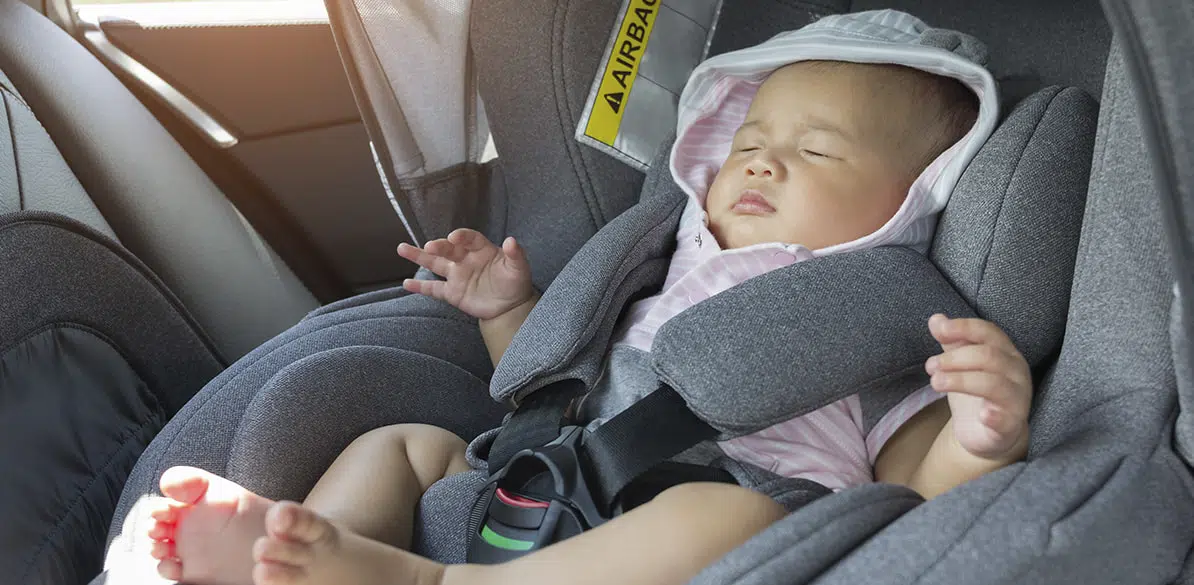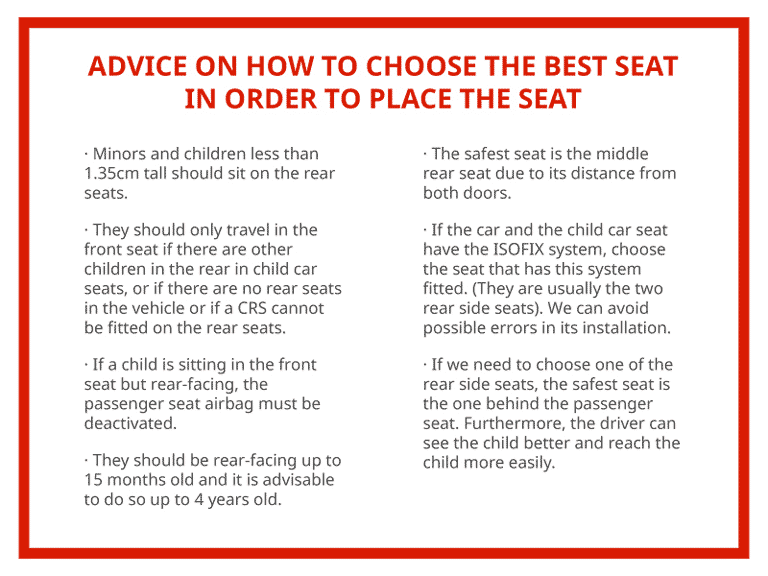Where in the car should the child seat be installed?

Road Safety
Many queries can arise when it comes to installing a child restraint system. The most common question is usually where to position the child seat, i.e., which is the safest seat and, therefore, where in the car should your child be positioned?
First, you should be clear on what the law has to say on this matter. Royal Decree 667/2015 of 17 July states that in vehicles with up to nine seats, including the driver’s seat, children who are 135 cm tall or less must travel in the back seats using an approved child restraint system suited to their height and weight.
In this regard there are only three exceptions that allow a child to travel in the front seat in his or her child seat:
- If the vehicle does not have any back seats.
- If all the back seats are already occupied by other children in their respective child seats.
- If a child restraint system cannot be installed on the rear seats.
For all these reasons, it is clear that children in child seats must always travel in the rear seats. If they have to travel in the front due to one of the three exceptions, they can only do so if the airbag is disabled, something that is strictly mandatory for rear-facing child restraint systems (390 KB).
We also provide information on how to disable the front passenger seat airbag and under what circumstances in this other post.
In this sense, remember that children up to 15 months old should travel facing backwards in order to be in the safest position possible. At Fundación MAPFRE we recommend that children continue travelling this way until they are at least 4 years old.

In which rear seat should the child seat be installed, then?
After reviewing the regulation it is clear that it is compulsory for children in child seats to travel in the back seats apart from the three aforementioned exceptions. All the experts agree that the best place to position the child seat is on the central rear seat. The reason for that is mainly for the child to be as far away as possible from the side doors and therefore better protected against this type of impact. The main drawback is that most cars have their ISOFIX anchor points in the two corner seats. Therefore, if you want to use the ISOFIX system, it is best to opt for the right-hand rear seat, as this allows for visual contact with the child and provides safe access from the sidewalk to put in or remove the child from its seat with complete peace of mind. Bear in mind that the main purpose of the ISOFIX system is precisely to avoid mistakes when installing the child seat, an essential part of protecting the child. If you are not proficient at using the seat belt to secure the child seat, the best option is to rely on the ISOFIX system. Furthermore, the fact that the ISOFIX system is anchored to the vehicle reduces the deceleration of the CRS in the event of a collision, thereby reducing the injuries that could be caused by the impact. In this regard, it should be made clear that you must choose the seat in which you can best install the child seat. The safest child seat in the world can be rendered ineffective if it is badly installed. Choosing an ISOFIX child seat guarantees the installation will be correct, so long as you follow the manufacturer’s instructions.
